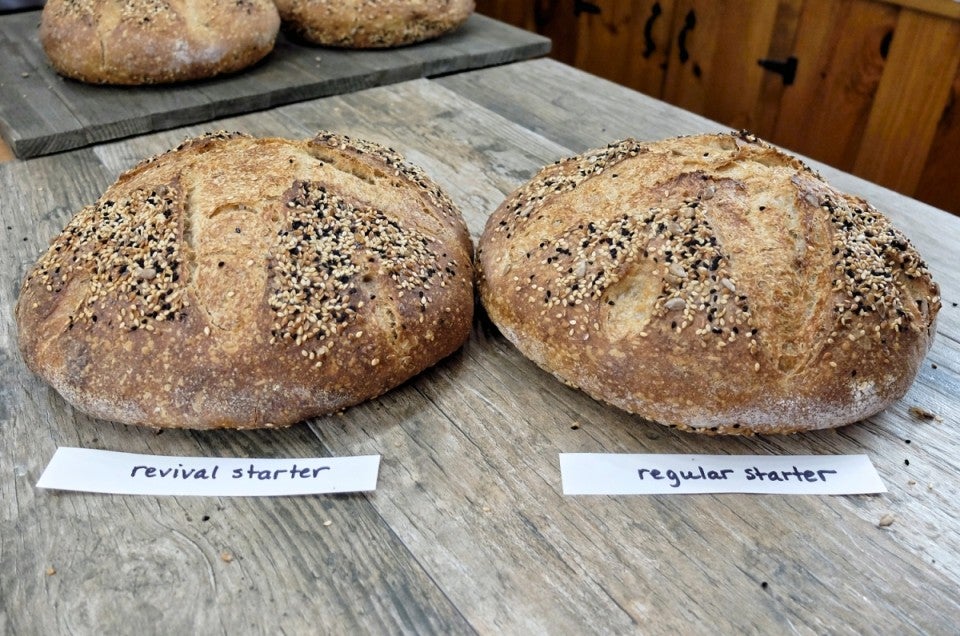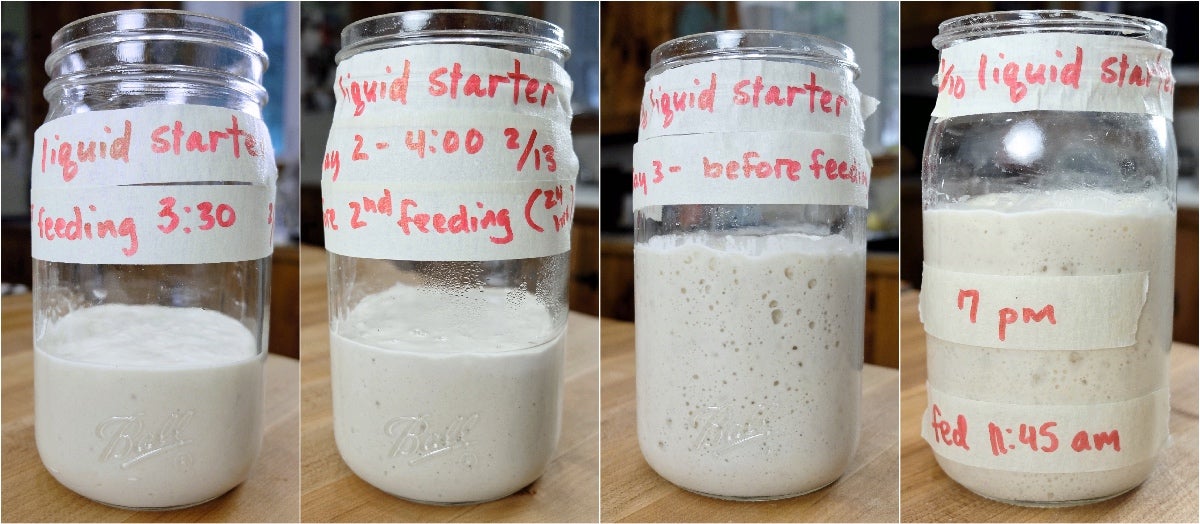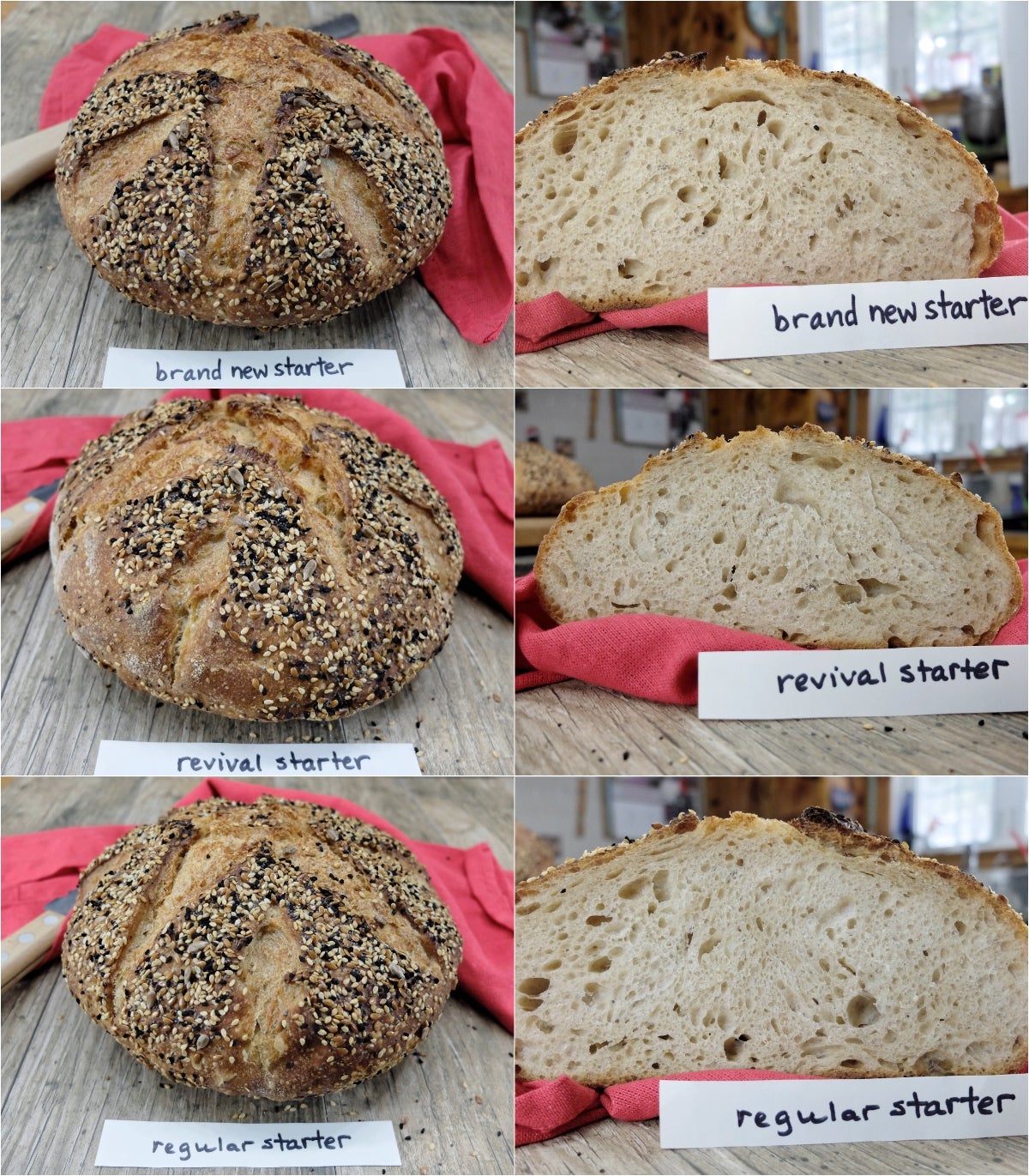


In our first sourdough starter troubleshooting post we tackled sourdough starter viability, and what will and won't cause your starter's demise. We also found out what a spoiled starter looks like, and how to know when it's time to throw it out and start over.
Today we'll take on the thorny question of whether it's worthwhile to try to revive an old but struggling starter — or if it's best to start over.
Creating your own starter from scratch is exciting and even a little magical; for details, see our step-by-step guide to creating a sourdough starter.
Simply mixing flour and water allows friendly bacteria and wild yeast to join forces and establish a balanced ecosystem that is able to impart great flavor and rise to your sourdough baking.

During the 6 to 10 days that it takes to get your starter up and running, it's a little more vulnerable to bacterial intruders and mold because it hasn't yet developed the defenses of a mature starter. But once fully developed, a well-maintained starter will readily fend off unwanted invaders and is very unlikely to spoil.
What if you inherited an old starter from your grandma and it's looking a little like it might be at death's door?

Sourdough authorities argue that there's nothing sacred about an old starter; a freshly developed "mature" starter will impart just as much flavor and rise to your bread.
Starting over with a new starter will get you back to baking great sourdough bread in a little over a week. So why take on the unpredictable task of trying to resurrect a sickly starter?
And is it even possible to thoroughly revive a starter that's sorely neglected?
Let's find out.


I start with two very neglected starters. Both starters (one all-purpose, one whole wheat) had been well-maintained until they were left at room temperature for a full month without being fed.
Why test both a white and a whole wheat starter? Starters can be maintained with all different types of flour, so I wanted to see if a whole wheat starter responded in the same way as a starter fed with all-purpose flour.


I pour the dark hooch off the neglected starters, and feed them following the feeding schedule called for in our sourdough starter recipe.
The revived starters smell a little "off" at first, but not awful; think vinegary sour, with a slightly unpleasant edge. Within four days they're rising well and have a nice, mildly tangy aroma. My theory is that both the acidity and the maturity of the neglected starters helps them fight off unwanted bacteria at the beginning of the process, which might allow for a faster return to a healthy and balanced starter.

By way of comparison, I also begin a starter from scratch. My brand-new starter is able to keep up in terms of rise. However, after four days it still smells a little funky and doesn't seem quite ready for baking bread.
On Day 4 (after only four feedings) I bake Naturally Leavened Sourdough Bread using my revived starters (which I mix together for the test), and my regularly well-maintained starters.


The results are a little shocking: two beautiful and delicious loaves. Both loaves taste mildly sour, although taste testers agree that the revived-starter loaf is slightly tangier.
On Day 5, after a total of six feedings, I try another test bake—this time including the brand-new starter; the revived starters, and my well-maintained regular starter.

Again, the results are surprising: three nice loaves, each with a similar rise and crumb structure. The only real difference is in the flavor of the breads. Each has mildly sour flavor, but the brand-new starter yields a slightly blander loaf.
It's definitely worth trying to revive a neglected starter (so long as it shows no signs of contamination). Pour off any discolored hooch, and start feeding it twice a day at room temperature. If it rises well and has a good aroma after three to four days, you're back in business!
We'd love to hear your own sourdough starter stories and questions below. Did you revive your starter from the brink of death? How long did it take? Is it thriving now?
For more information, please check out our first sourdough starter troubleshooting post.

